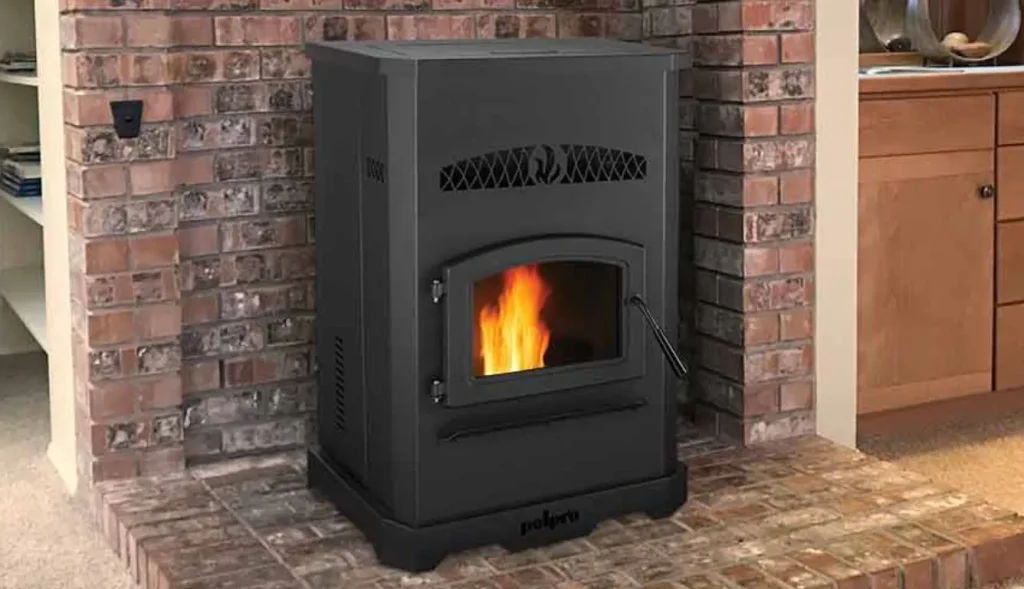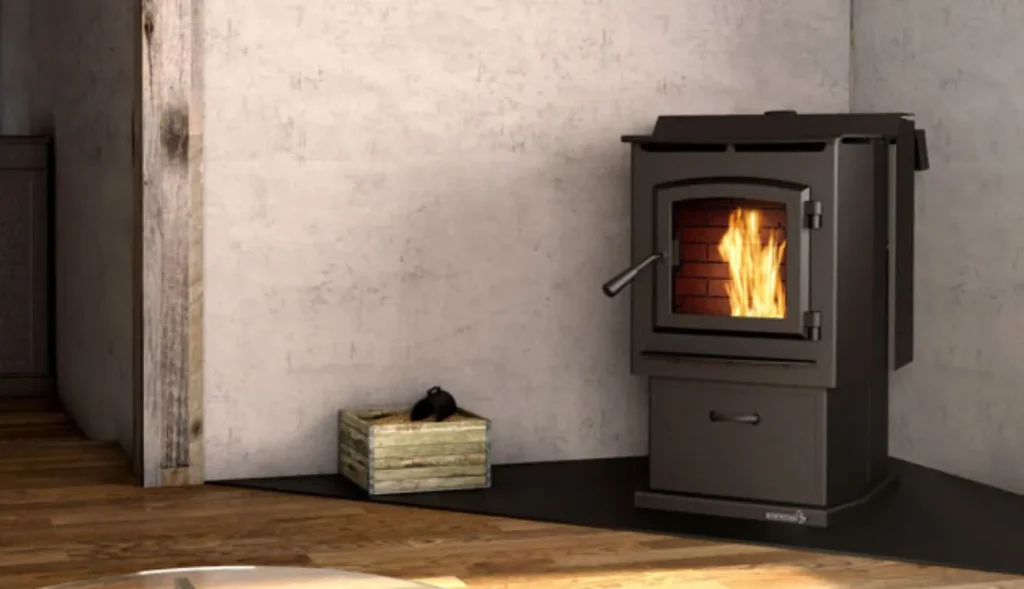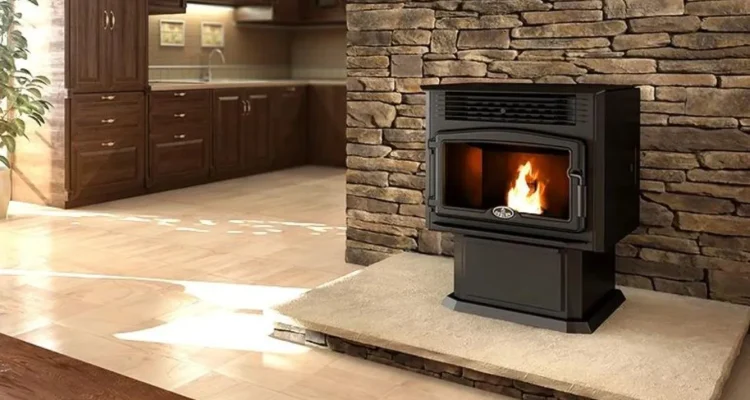Introduction
Pellet stoves are a popular and efficient way to heat your home, offering both environmental benefits and cost savings. But to get the most out of your pellet stove, it’s essential to operate it correctly. This guide will walk you through everything you need to know to safely and effectively operate your pellet stove.

Understanding Your Pellet Stove
Types of Pellet Stoves
There are two main types of pellet stoves: freestanding stoves and insert stoves. Freestanding stoves are standalone units that can be placed in any room with proper venting, while insert stoves are designed to be installed in existing fireplaces. Both types function similarly, using compressed wood or biomass pellets as fuel.
Key Components of a Pellet Stove
Understanding the basic components of your pellet stove is crucial for proper operation. These include:
- Hopper: Where the pellets are stored before being fed into the stove.
- Auger: A screw-like mechanism that feeds pellets from the hopper to the burn pot.
- Burn Pot: The area where the pellets are burned.
- Heat Exchanger: Transfers the heat from the burning pellets to your home.
- Exhaust Fan: Removes combustion gases and maintains airflow.
Safety Precautions Before Operating
Importance of Safety Measures
Operating a pellet stove involves fire, so safety should always be your first priority. Before you even think about starting your stove, familiarize yourself with the manufacturer’s safety instructions. Ignoring these guidelines can lead to dangerous situations, including house fires and carbon monoxide poisoning.
Initial Safety Checks
- Inspect the Stove: Make sure there are no visible damages or obstructions in the vents.
- Check Carbon Monoxide Detectors: Ensure they are functioning properly.
- Clear the Area: Remove any flammable materials near the stove.
Preparing Your Pellet Stove for Operation
Checking Pellet Quality
The quality of the pellets you use can significantly impact the performance of your stove. Opt for premium-grade pellets with low ash content to ensure a cleaner burn and less maintenance.
Cleaning and Maintenance Before Use
Before firing up your pellet stove for the season, perform a thorough cleaning. Remove any leftover ash from the previous use, clean the burn pot, and inspect the vents for any blockages.
Loading the Pellets
How to Properly Load Pellets
Loading pellets into the hopper is straightforward, but doing it correctly is key to avoiding jams and ensuring an even burn. Slowly pour the pellets into the hopper, ensuring they spread out evenly. Avoid overfilling, as this can lead to feeding issues.
Common Mistakes to Avoid
- Overfilling the Hopper: Can cause pellets to spill out and create a mess.
- Using Poor-Quality Pellets: Leads to more frequent cleanings and less efficient burns.
Starting Your Pellet Stove
Step-by-Step Guide to Ignition
- Turn on the Power: Ensure the stove is plugged in and the power switch is turned on.
- Set the Thermostat: Adjust the thermostat to your desired temperature.
- Ignite the Pellets: Press the ignition button, or manually light the pellets if your stove does not have an auto-ignition feature.
Troubleshooting Common Startup Issues
If your stove doesn’t ignite:
- Check the Hopper: Ensure there are enough pellets.
- Inspect the Igniter: If it’s not glowing, it may need to be replaced.
Adjusting the Heat Settings
How to Control the Temperature
Most pellet stoves come with a built-in thermostat that allows you to control the heat output. Set the thermostat to your preferred temperature, and the stove will automatically adjust the feed rate of the pellets to maintain that temperature.
Understanding the Thermostat Settings
Your stove’s thermostat typically has several settings:
- Low: For a gentle, sustained heat.
- Medium: A balance between warmth and efficiency.
- High: For quick heating of a room.
Maintaining an Efficient Burn
Tips for Maximizing Fuel Efficiency
To get the most out of your pellets:
- Use High-Quality Pellets: They burn more efficiently and produce less ash.
- Keep the Stove Clean: Regularly clean the burn pot and heat exchanger.
- Adjust the Airflow: Proper airflow ensures a complete burn, reducing waste.
Signs of an Inefficient Burn
- Excessive Smoke: Indicates incomplete combustion.
- Heavy Ash Build-Up: Suggests poor-quality pellets or insufficient airflow.
Cleaning and Maintenance During Operation
Regular Cleaning Routines
Even while your stove is running, it’s essential to maintain a cleaning routine. Remove ash from the burn pot daily and clean the heat exchanger weekly to ensure optimal performance.
Handling Ash and Residue
Ash should be disposed of in a metal container with a tight-fitting lid to prevent any risk of fire. Allow the ashes to cool completely before disposal.
Dealing with Common Issues
What to Do If Your Stove Isn’t Working Properly
If your stove is malfunctioning:
- Check the Power Source: Ensure the stove is plugged in and the circuit breaker hasn’t tripped.
- Inspect the Hopper and Auger: If the auger isn’t feeding pellets, there may be a jam.
When to Call a Professional
If you’re unable to resolve the issue on your own, or if the stove requires complex repairs, it’s best to call a professional technician.
Shutting Down Your Pellet Stove
Safe Shutdown Procedures
To safely shut down your pellet stove:
- Turn Off the Thermostat: This will stop the feed of pellets.
- Allow the Stove to Cool: Wait for the stove to cool down completely before cleaning or performing any maintenance.
Cooling Down Process
After shutting down, the exhaust fan will continue to run for a few minutes to help cool the stove and vent out any remaining gases.
Storing Your Pellet Stove
Off-Season Storage Tips
When you’re done using your pellet stove for the season:
- Clean It Thoroughly: Remove all ash and clean the burn pot, heat exchanger, and vents.
- Store Pellets Properly: Keep any leftover pellets in a dry place to prevent moisture absorption.
Long-Term Maintenance
Consider having your stove professionally serviced at the end of the season to ensure it’s ready for the next use.
Environmental Impact of Pellet Stoves
How Pellet Stoves Contribute to Sustainability
Pellet stoves are considered environmentally friendly because they use renewable biomass as fuel. Additionally, they produce very little ash and minimal emissions compared to traditional wood stoves.
Comparing Pellet Stoves to Other Heating Methods
Compared to oil, gas, or electric heating, pellet stoves are more sustainable and often more cost-effective. They also offer the advantage of reducing reliance on fossil fuels.
FAQs
- How Often Should I Clean My Pellet Stove?
It’s recommended to clean the burn pot daily and perform a more thorough cleaning weekly. End-of-season maintenance is also crucial. - Can I Burn Other Materials in a Pellet Stove?
No, you should only use wood or biomass pellets specifically designed for pellet stoves. Burning other materials can damage the stove and void your warranty. - How Long Does a Bag of Pellets Last?
A 40-pound bag of pellets typically lasts between 16 to 24 hours, depending on your stove’s settings and the heat output required. - Are Pellet Stoves Noisy?
Pellet stoves do produce some noise from the fans and auger, but modern models are designed to minimize this noise. - What Should I Do If My Pellet Stove Smokes?
Excessive smoke could be a sign of poor-quality pellets, improper airflow, or a blocked vent. Check these areas and consider having your stove inspected by a professional if the issue persists.

Conclusion
Operating a pellet stove efficiently and safely requires some knowledge and routine maintenance, but the rewards are well worth the effort. By following the steps outlined in this guide, you can enjoy a warm and comfortable home all winter long with the added benefits of cost savings and environmental sustainability.


Congratulation!